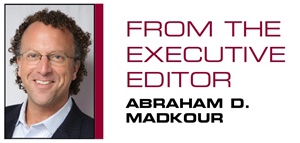A friend and I were watching ESPN recently and, during “Around The Horn,” he found himself in total agreement with two of the panelists for that episode:
Kate Fagan and
Sarah Spain. A self-described chauvinist, he said how surprised he was to find himself in agreement with — and impressed by — the deep bench of female talent at the network, and cited Fagan, Spain,
Cari Champion,
Jane McManus and others. I agreed, and said I consider
Jackie MacMullan among the most talented voices in sports media. ESPN is a market leader in women playing a prominent role in its sports coverage, but overall, women make up a very small percentage of the sports media — a 2014 Gender Report Card by
Richard Lapchick showed they represent 10 to 20 percent of certain areas (his next report is due this spring).
So with the sports media overwhelmingly male, it was interesting to listen to a discussion in Washington, D.C., that looked at the opportunities and obstacles when it comes to women in the space. The panel, at George Washington University’s SINC Conference, featured longtime Washington Post reporter/columnist Cindy Boren, CSN Mid-Atlantic’s Rebecca O’Sullivan-Schulte, top D.C. network NBC4 Sports’ Heather McDonough and college basketball and WNBA analyst Christy Winters-Scott. Each agreed that coverage of women’s sports has increased, but there are still stigmas attached to — and challenges for — women trying to make a career in sports media.
 |
Christy Winters-Scott, Cindy Boren, Heather McDonough and Rebecca O’Sullivan-Schulte
Photo by: JESSE GURNEY / GEORGE WASHINGTON UNIVERSITY
|
First, when it comes to coverage, Boren cited technology.
“Years ago, when it came to covering women’s sports, there always used to be the question at The Washington Post, ‘What do we have room for?’ Well, we have room for everything on the Web, and we can appeal to every audience. Now, we can send someone to cover the [WNBA] Mystics and you can read compelling stories. You have room for those stories and you don’t have to debate about what coverage gets cut and you don’t have to cut back on Redskins coverage,” she said.
But the quality of news and frequency of industry-shifting stories still isn’t there.
“We would like to see more headlines on women’s sports make the front page,” said O’Sullivan-Schulte. “That is less about women’s sports but more about a person and is it a great story.”
Boren acknowledged editors and decision-makers need to make decisions based on readership.
“It’s a matter of demand for the news and the coverage of women’s sports,” she said. “For example, if you had the same number of people at women’s games as you did the men’s games, it would be clear. But that’s not the case.”
She noted that women athletes are leading the way in a number of stories affecting sports and society, as WNBA players were first-movers in the Black Lives Matter protest last year. “Honestly, women athletes have been out front on equality, transgender and facility equality issues,” she added. Winters-Scott agreed, but felt much of the media spotlight on women’s sports skews negative. She cited the recent comments by former WNBA player Candice Wiggins — who said her experience in the league was “toxic” — receiving far more media attention than the player comments defending the league. “People are much quicker — and it seems easier — to jump on the negative of women’s sports stories rather than the positive,” she said. “They jump right into those negative stories as if to show there are issues or problems with women’s sports.”
When the conversation shifted to women working in sports media, all agreed that acceptance of and patience with women is far less than their male counterparts.
“If a woman makes a mistake or mispronounces an athletes’ name, wow, people jump all over her in our email and on social media,” said O’Sullivan-Schulte. “The reaction is totally different from when a man makes the same mistake.”
Boren, a 32-year veteran in the business, has seen acceptance of women in sports media increase, especially from her early days. But she said it’s a constant battle.
“It’s better. But even last week, after being on a radio show, I got emails from a listener who told me, ‘I don’t want to hear a woman’s opinion or hear her talk about sports.’ So, he would rather hear an uninformed person apparently than me? It was really eye-opening, and made me think: ‘We are still here? Still dealing with this issue?’ It is very frustrating.”
Winters-Scott believes respect comes down to preparation and understanding of the beat. “If you do your homework, and do your research and be incredibly prepared, but also have a passion for what you’re covering, you can get respect,” she said. “I have a passion for basketball, and I can dissect and discuss it with people at the highest level, and so I hope that has earned their respect.”
McDonough agreed, saying the lesson for women in sports media is simple. “As long as the women know what they are talking about and are accurate, no one seems to care,” she said. “What bothers me, and I know this is going to upset some people or may come out wrong, is when women aren’t fully prepared. Act professional, do your research. Be more prepared than anyone else, and that will earn you respect. I really guard against women who use sports media just to try and get to the next level, because they aren’t prepared.”
“Be twice as prepared. Twice as ready,” Boren advised women looking to get involved. “If the press conference is at 11 a.m., and everyone else is showing up at 11 a.m., think about showing up at 10:45. Also, be transparent and be honest.”
O’Sullivan-Schulte’s advice, “Have a thick skin. Have a voice and be who you are.”
Afterward, I followed up with Boren and O’Sullivan-Schulte about the advice they give to women looking to start a career in sports journalism. They both noted the proliferation of opportunities.
“You have to start somewhere,” Boren wrote me. “Everyone wants to be Stephen A. Smith and pontificate or analyze sports, but few people remember that he started out as a reporter. Look for a job at a smaller outlet; everyone needs Web content, and a person who is talented and professional can get a start even as a freelancer. If you’re there reporting and watching every day, you’ll find great stories. If you conduct yourself professionally, you will impress your peers and establish a solid reputation. It is also important to take your reporting across multiple platforms: Reporters will write as well as deliver audio and video reports while sharing content on social media.”
“Look at all aspects of the media spectrum,” wrote O’Sullivan-Schulte. “Too few women consider the amount of various opportunities available within media companies, from business development to research to production, as well as on-air talent positions. Also, don’t get stuck into one discipline. Learn as many different parts of the business as you can if you ever want to lead a company.”
The opportunities are there. The path to success sounds familiar: Hard work, research and preparation. The people focused on those elements are the ones changing the game in sports media and leading it to greater gender diversity.
Abraham D. Madkour can be reached at amadkour@sportsbusinessjournal.com.





